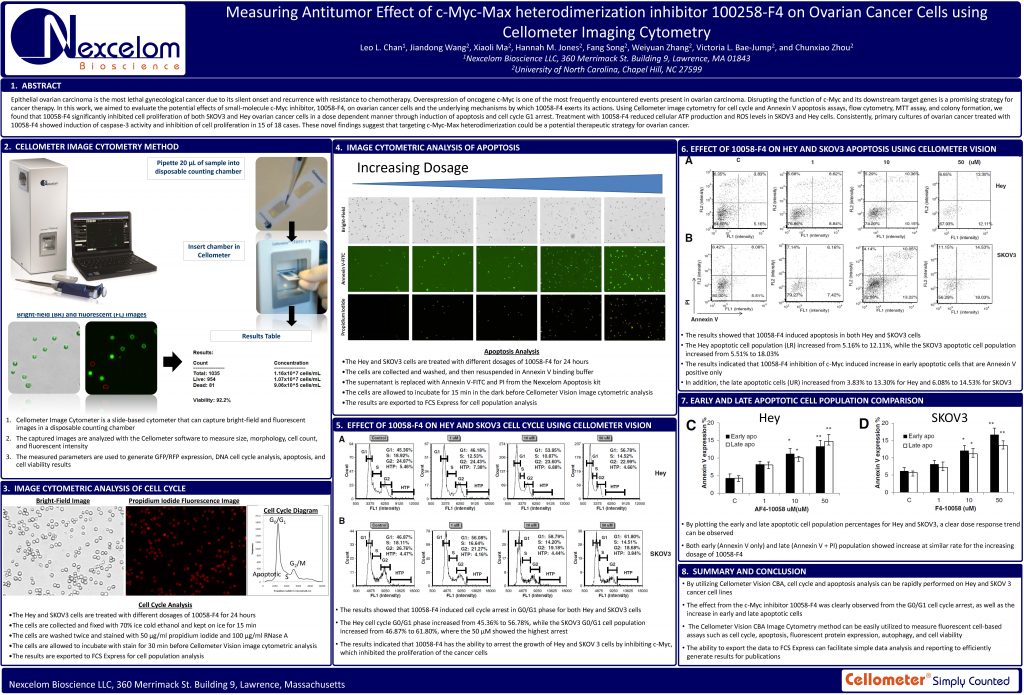
Measuring Antitumor Effect of c-Myc-Max heterodimerizationinhibitor 100258-F4 on Ovarian Cancer Cells using Cellometer Imaging Cytometry
Leo L. Chan, Jiandong Wang, Xiaoli Ma, Hannah M. Jones, Fang Song, Weiyuan Zhang, Victoria L. Bae-Jump, and Chunxiao Zhou
Epithelial ovarian carcinoma is the most lethal gynecological cancer due to its silent onset and recurrence with resistance to chemotherapy. Overexpression of oncogene c-Myc is one of the most frequently encountered events present in ovarian carcinoma. Disrupting the function of c-Myc and its downstream target genes is a promising strategy for cancer therapy. In this work, we aimed to evaluate the potential effects of small-molecule c-Myc inhibitor, 10058-F4, on ovarian cancer cells and the underlying mechanisms by which 10058-F4 exerts its actions. Using Cellometer image cytometry for cell cycle and Annexin V apoptosis assays, flow cytometry, MTT assay, and colony formation, we found that 10058-F4 significantly inhibited cell proliferation of both SKOV3 and Hey ovarian cancer cells in a dose dependent manner through induction of apoptosis and cell cycle G1 arrest. Treatment with 10058-F4 reduced cellular ATP production and ROS levels in SKOV3 and Hey cells. Consistently, primary cultures of ovarian cancer treated with
10058-F4 showed induction of caspase-3 activity and inhibition of cell proliferation in 15 of 18 cases. These novel findings suggest that targeting c-Myc-Max heterodimerization could be a potential therapeutic strategy for ovarian cancer.
